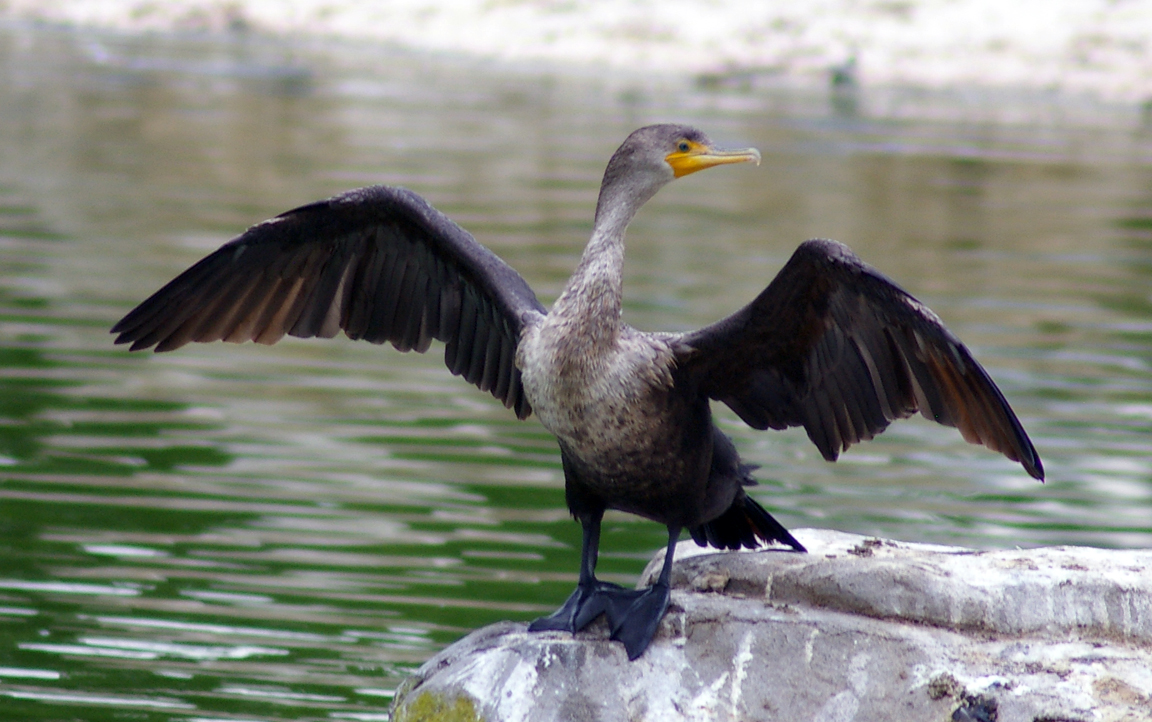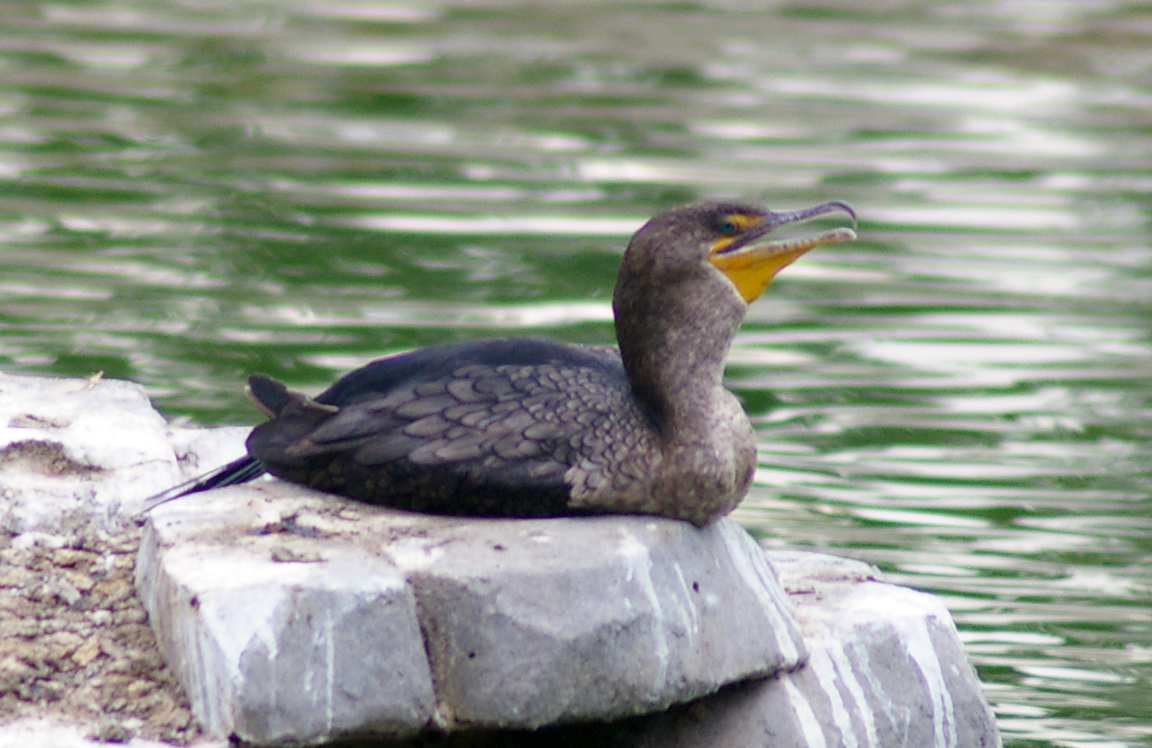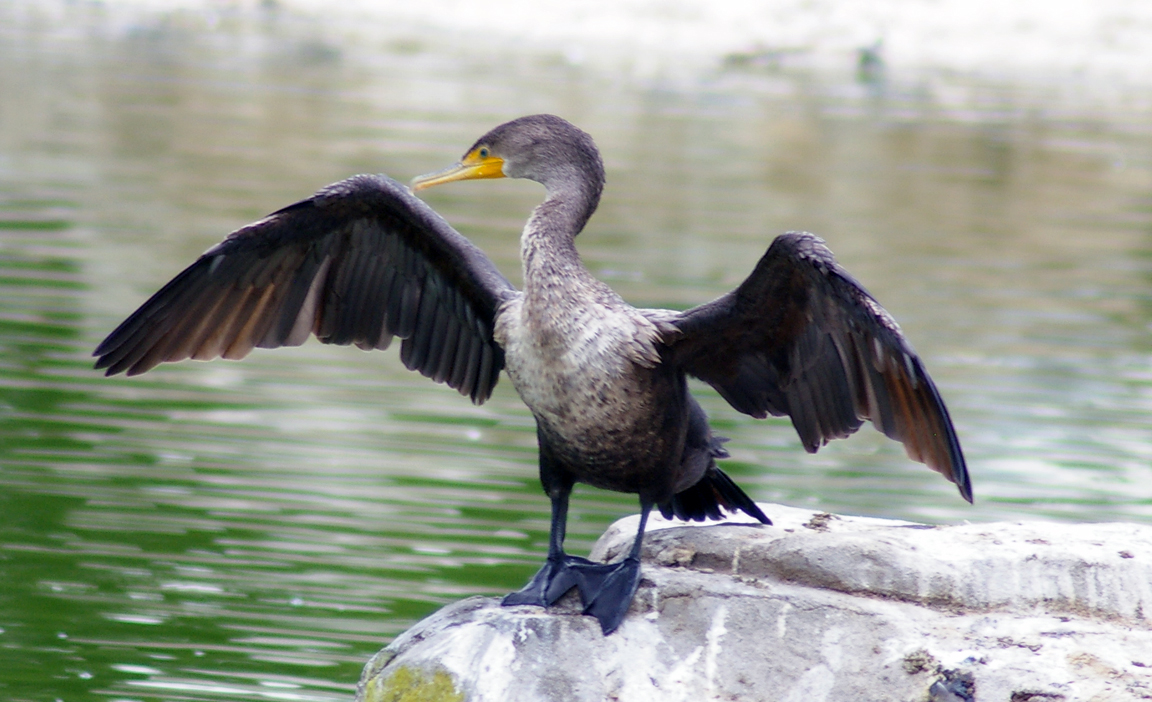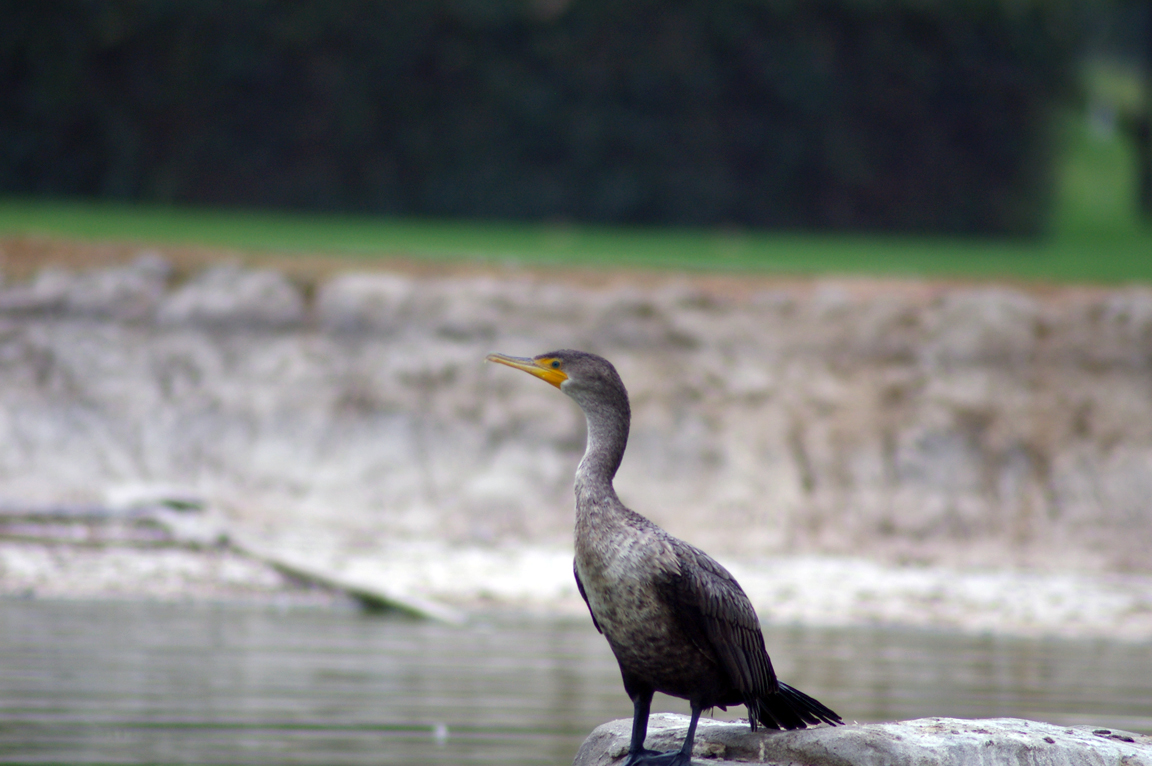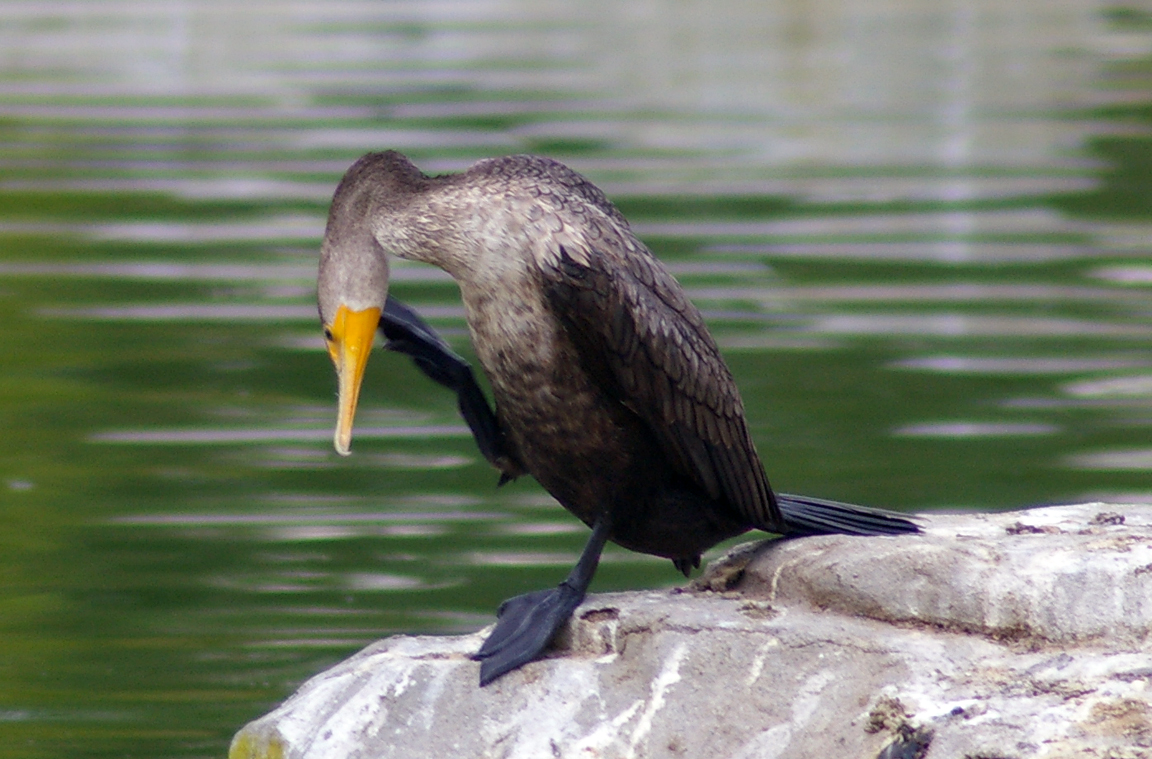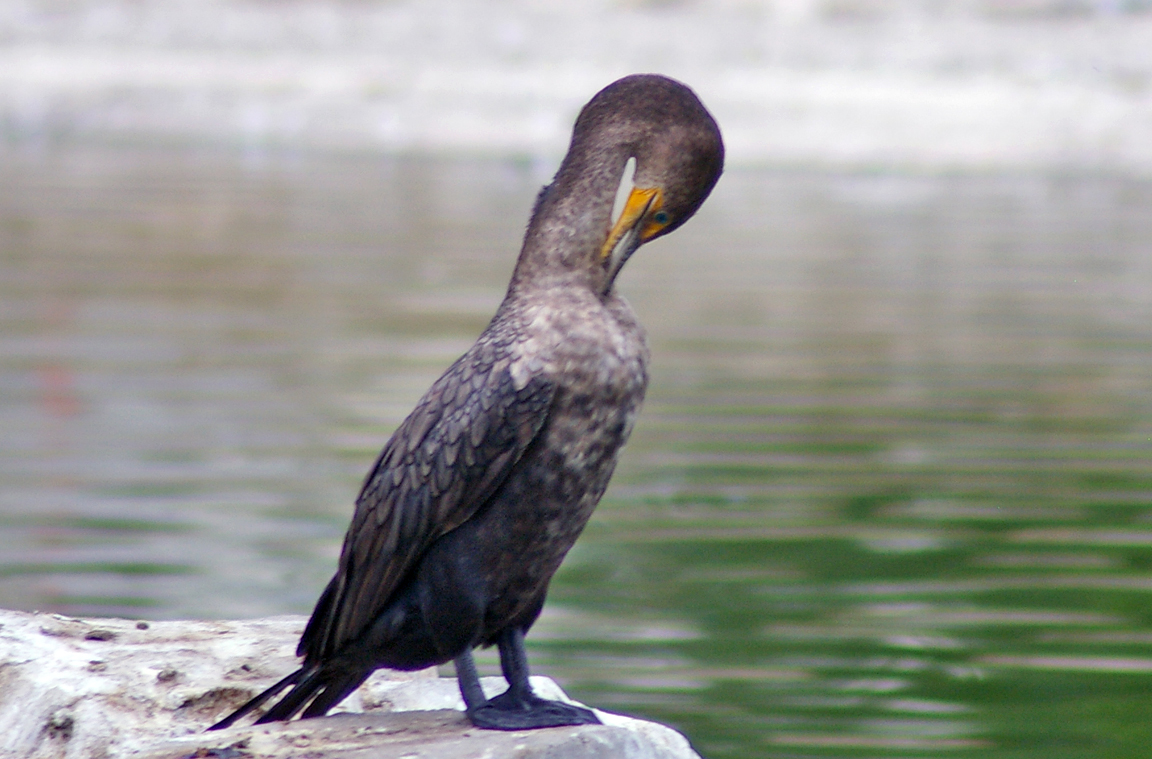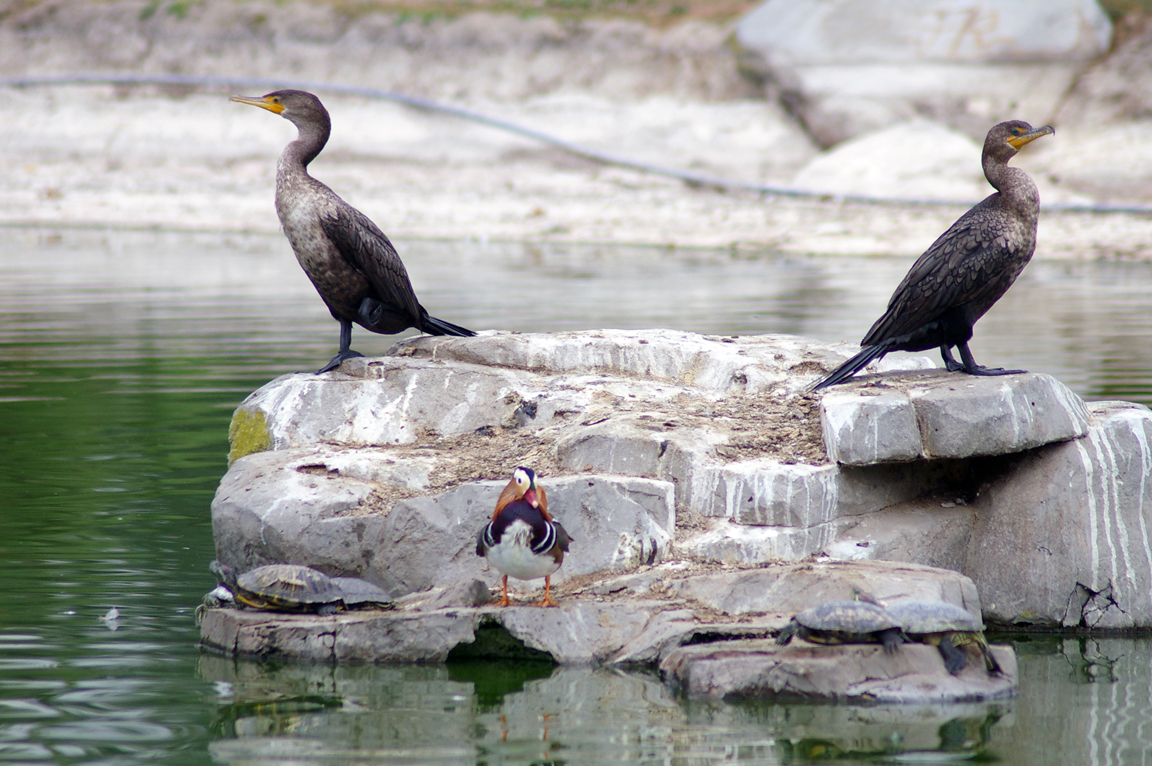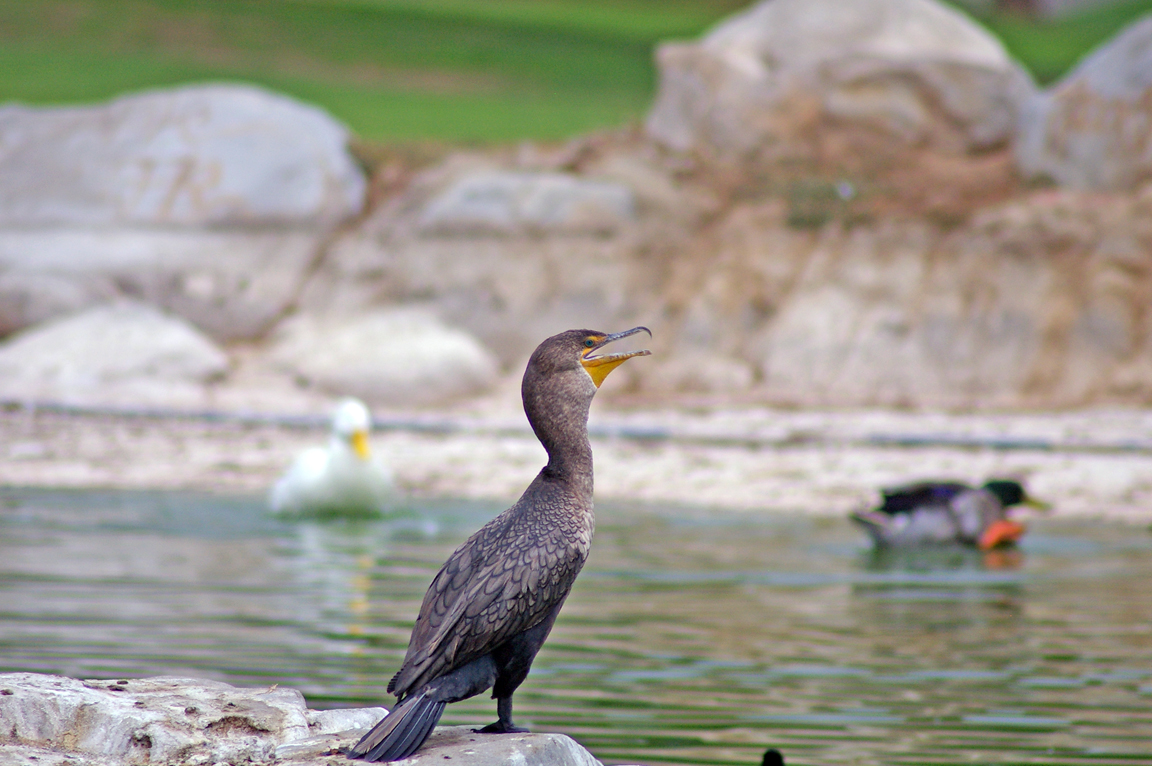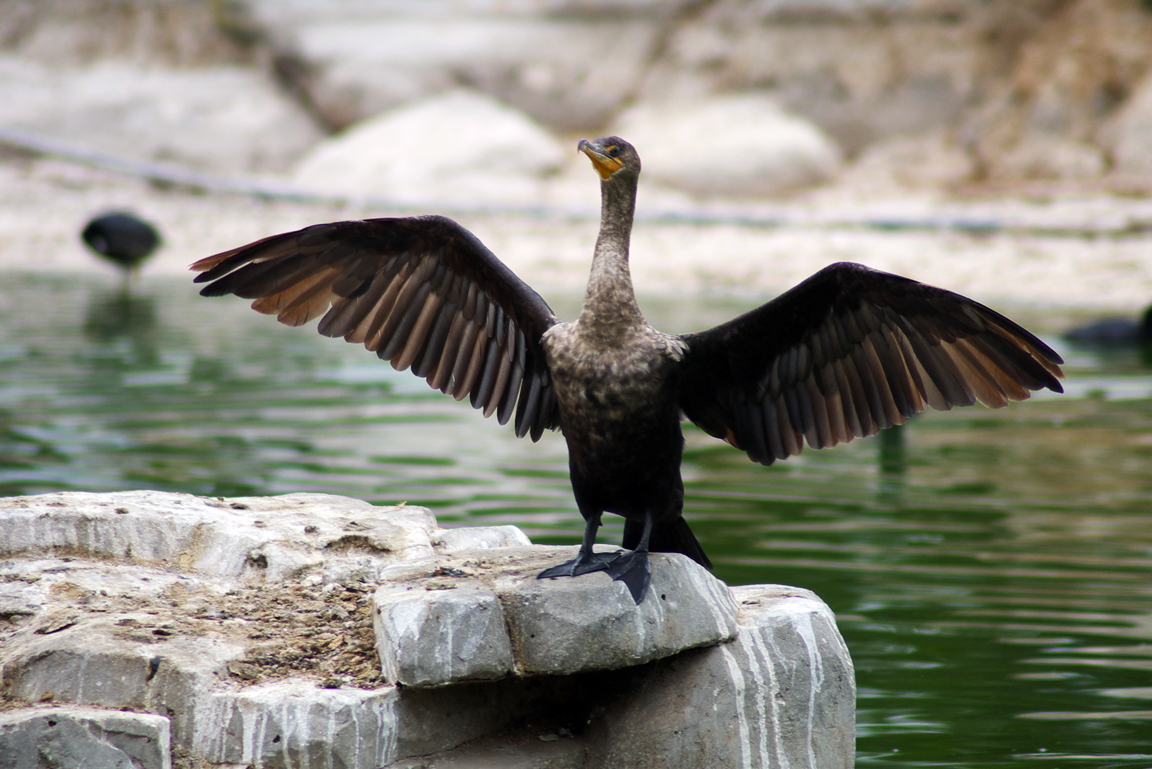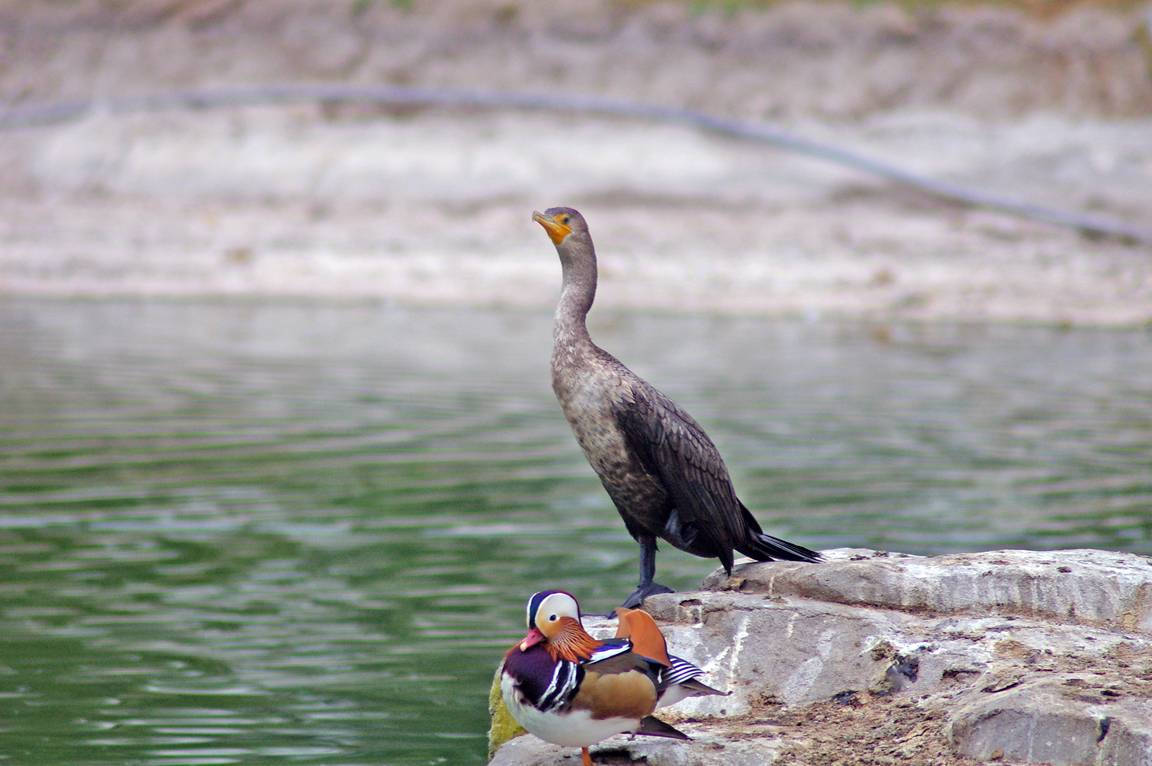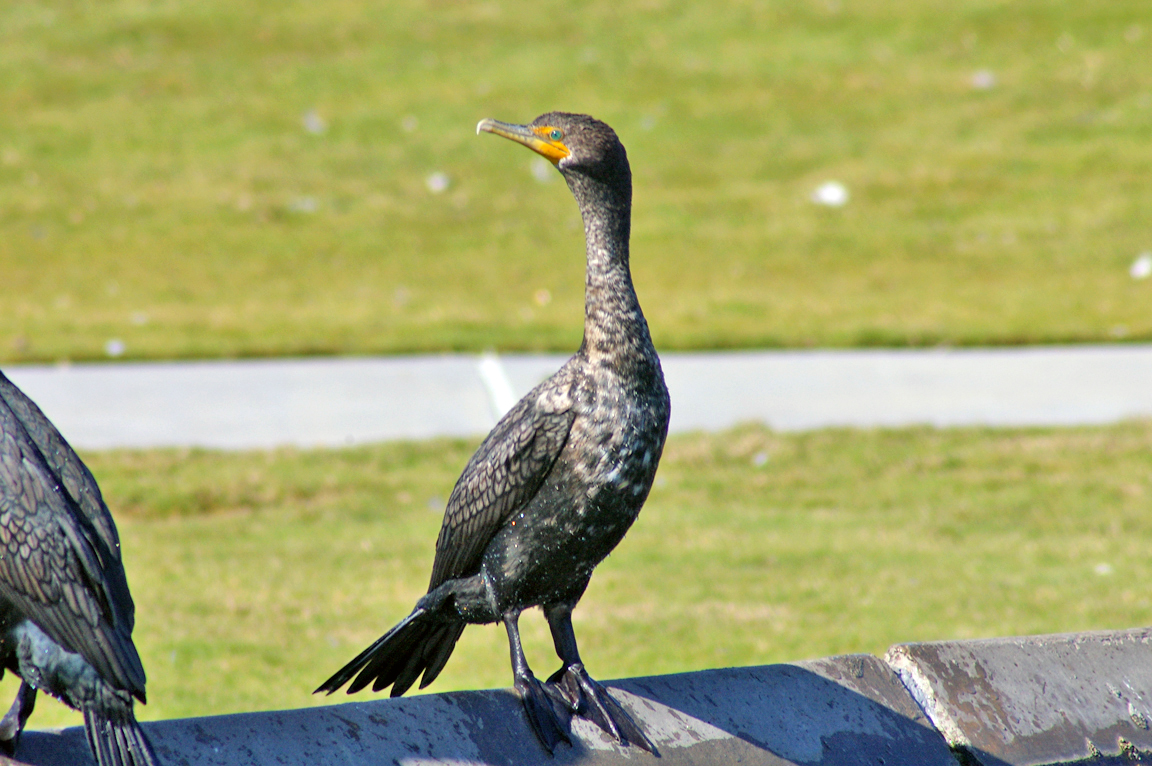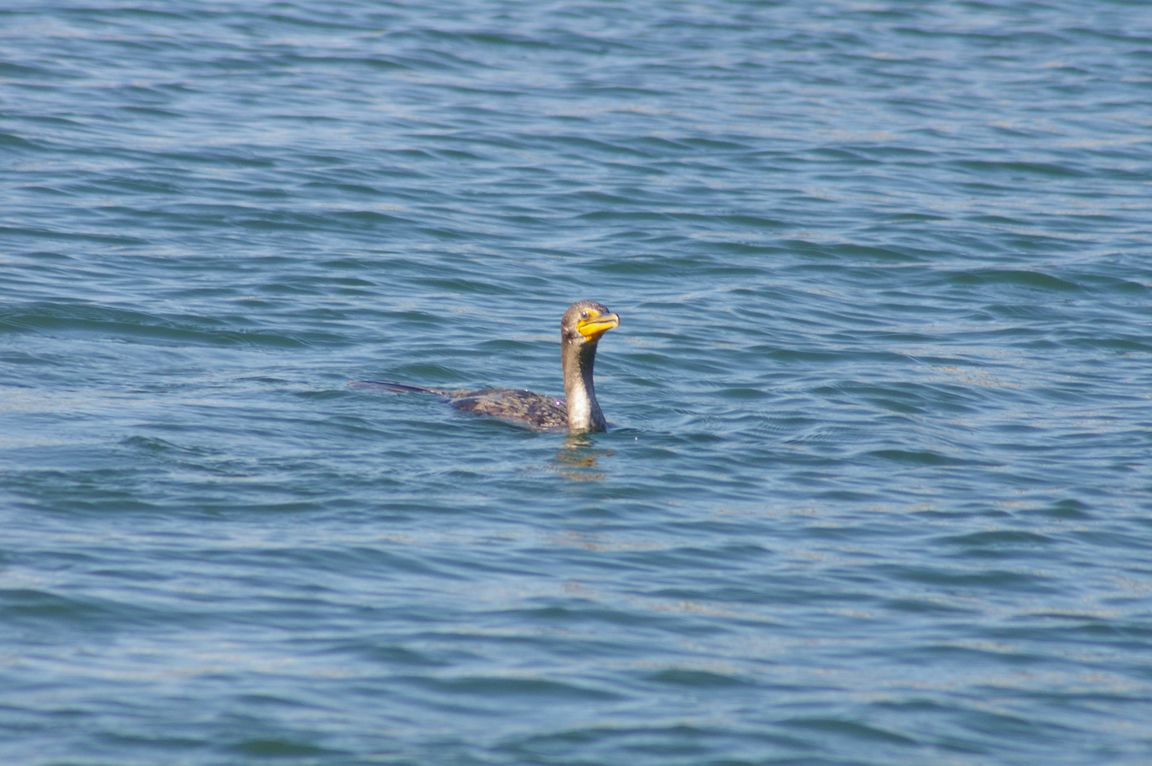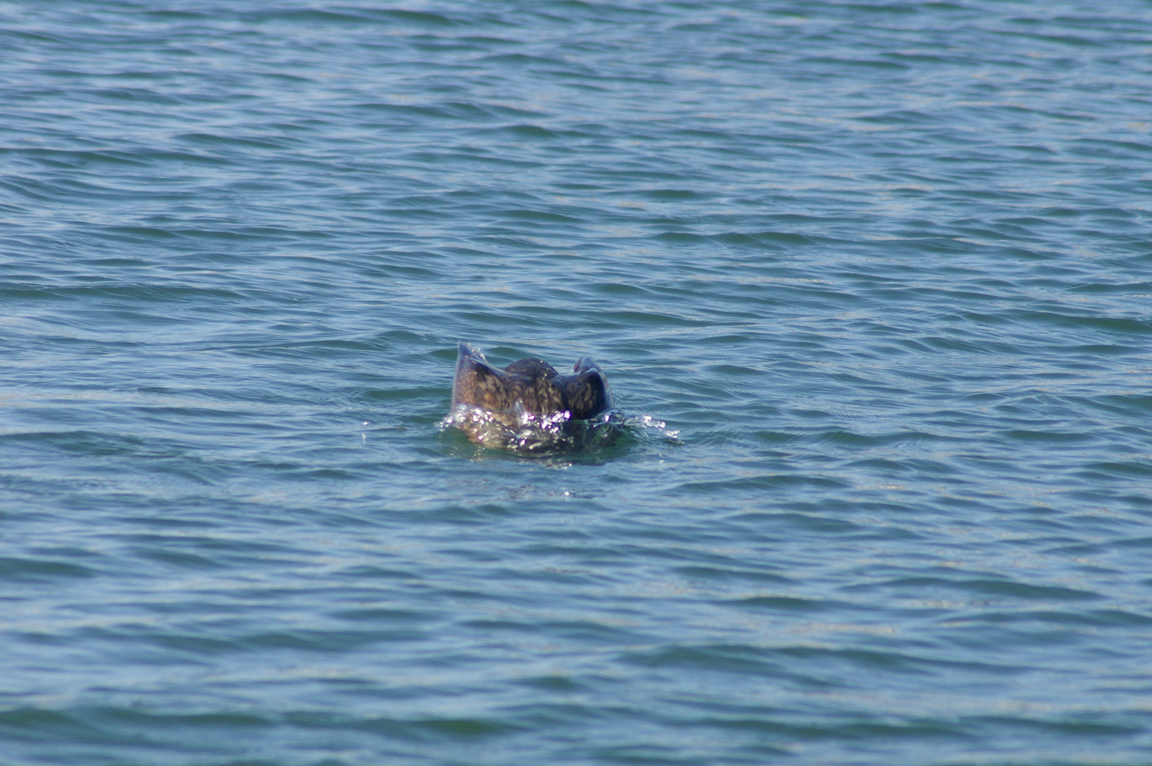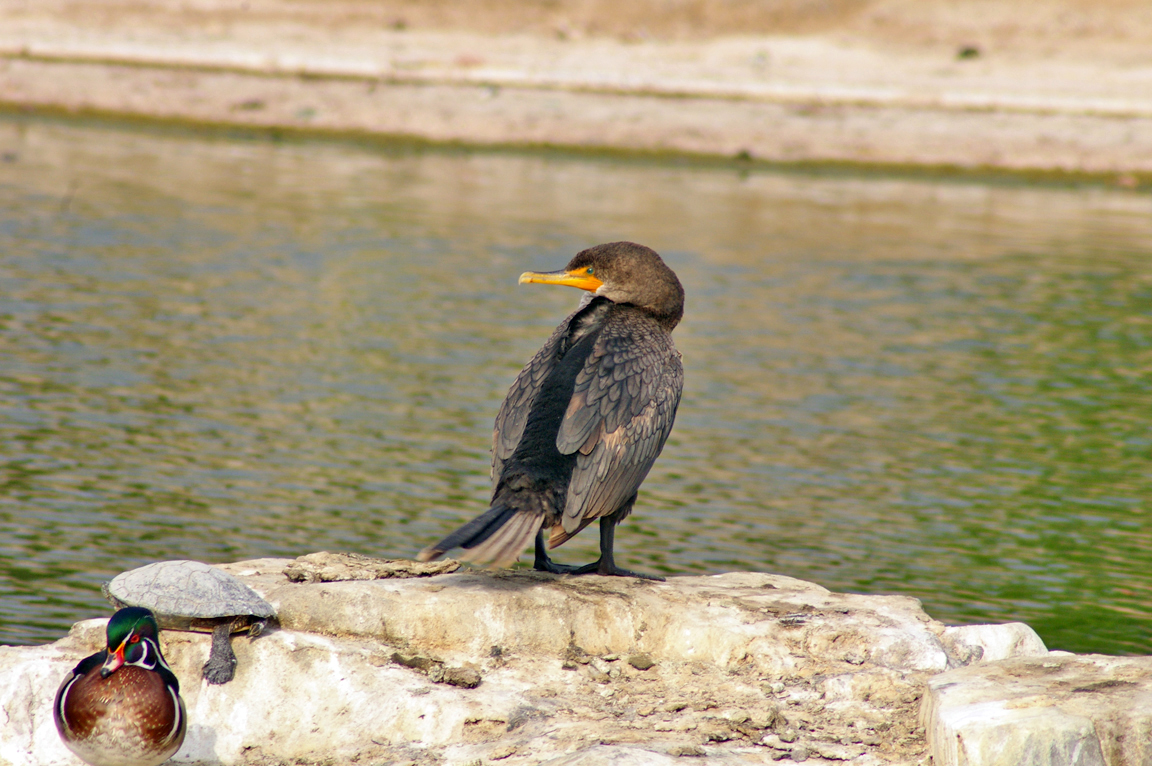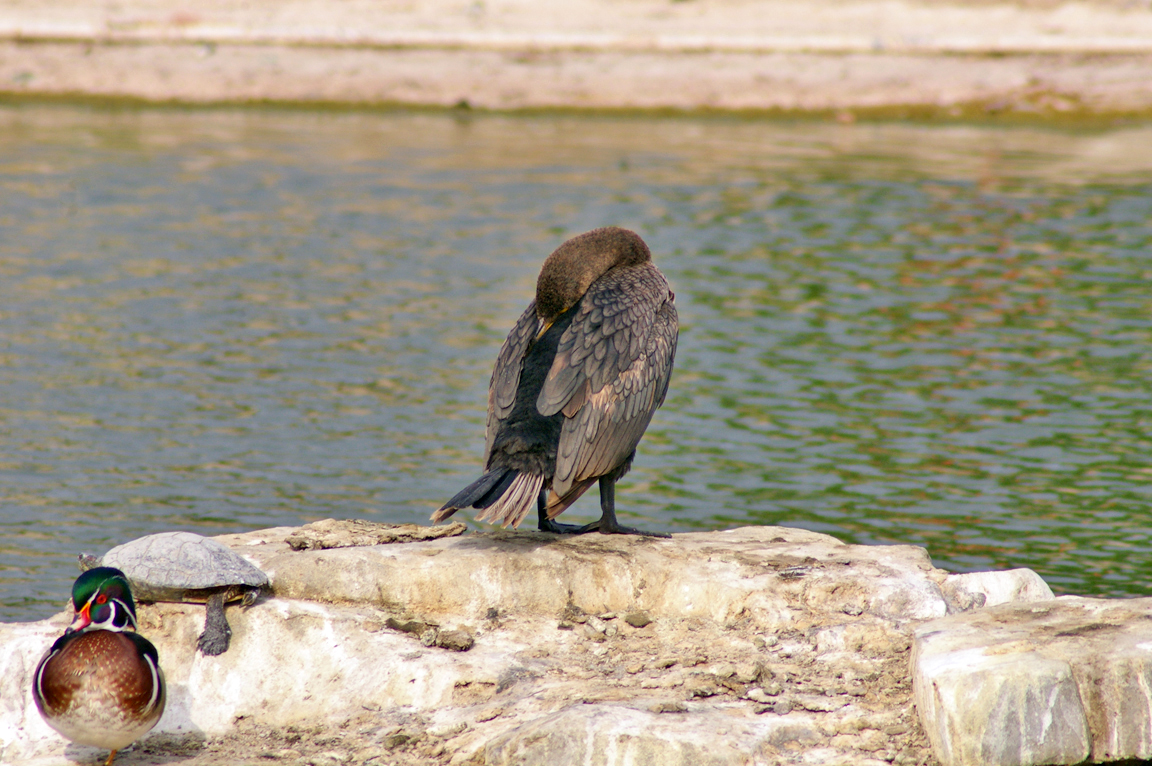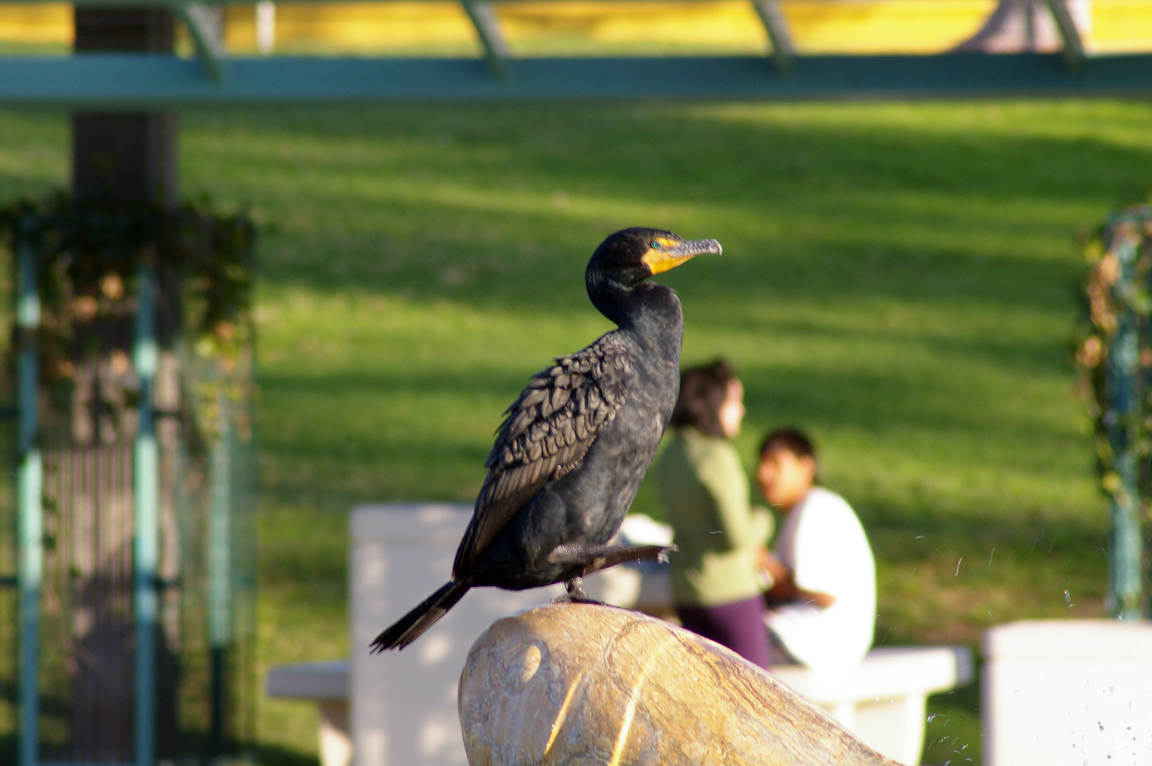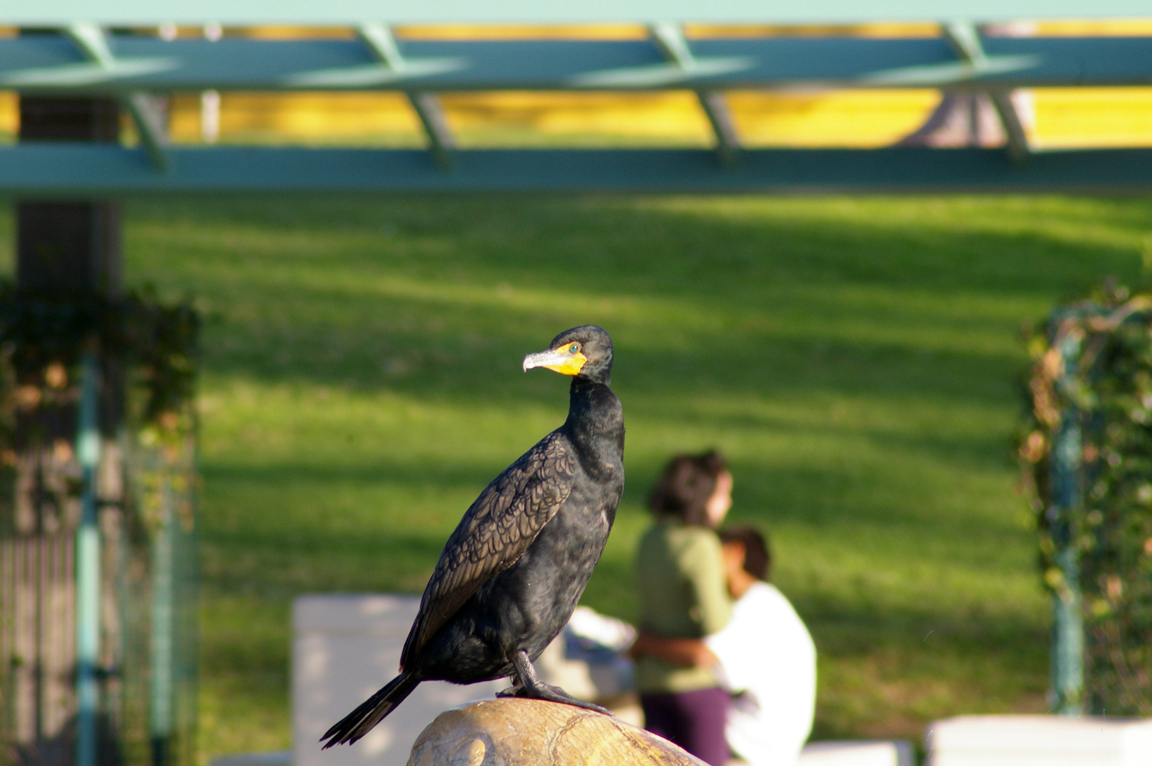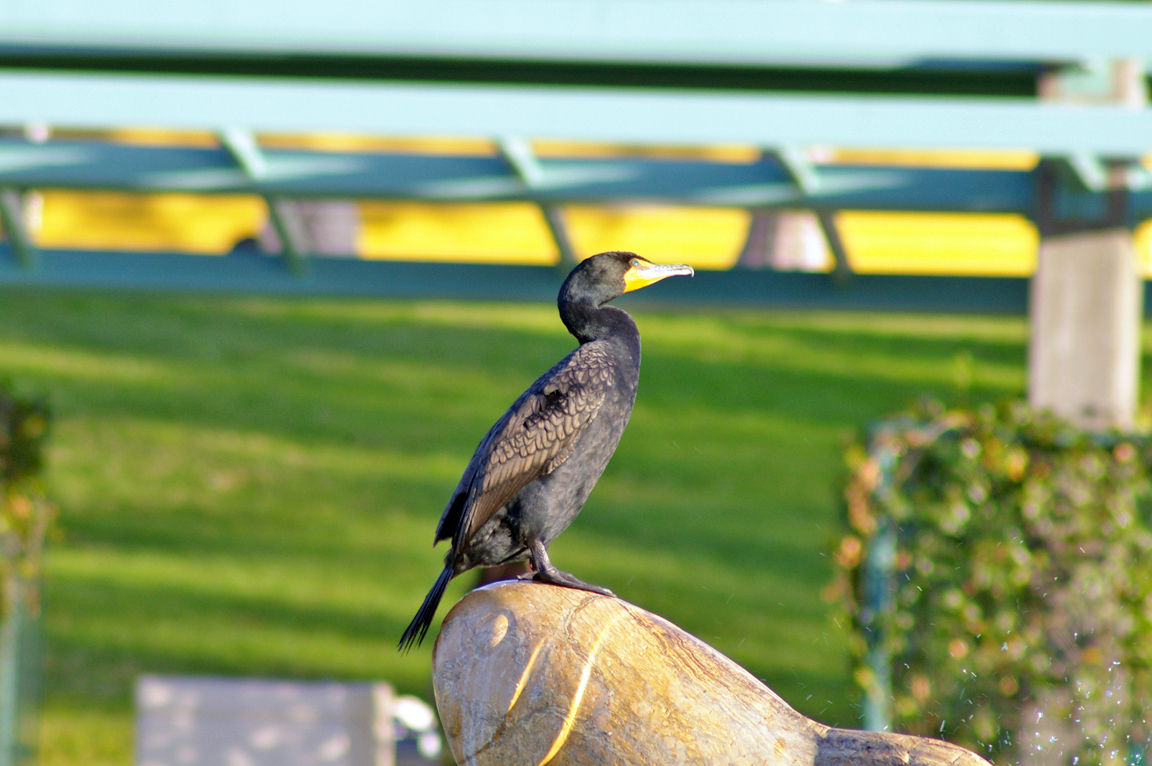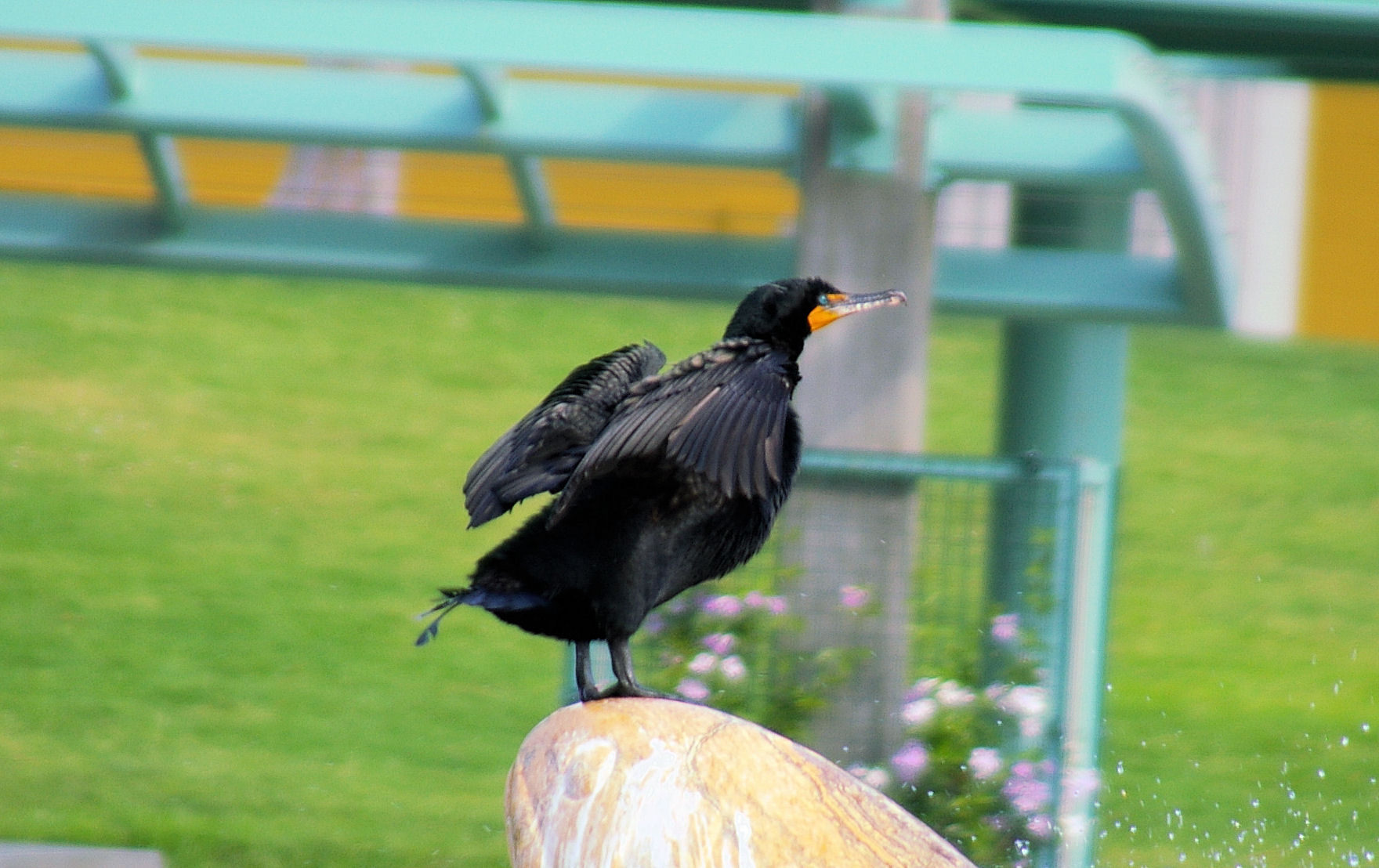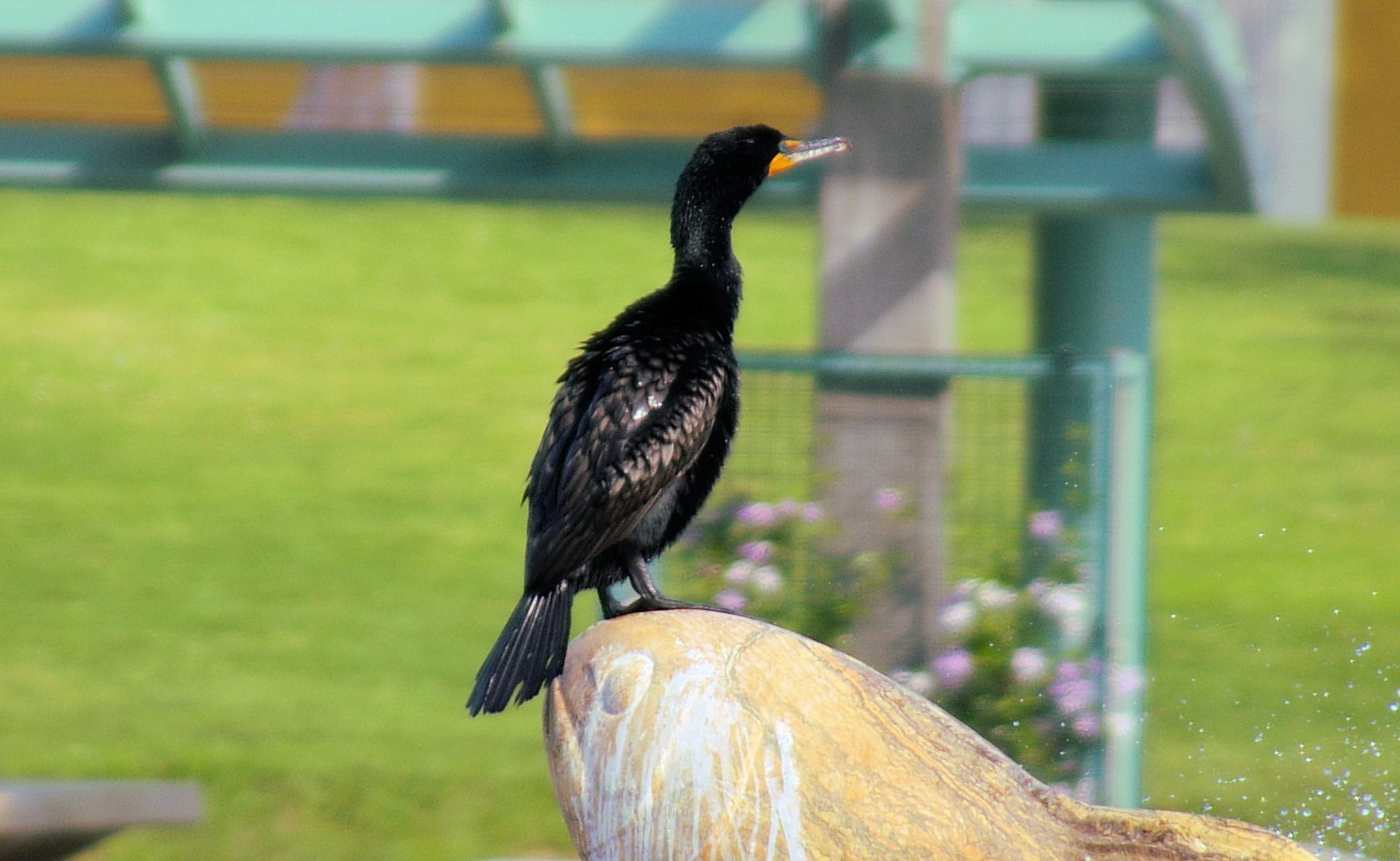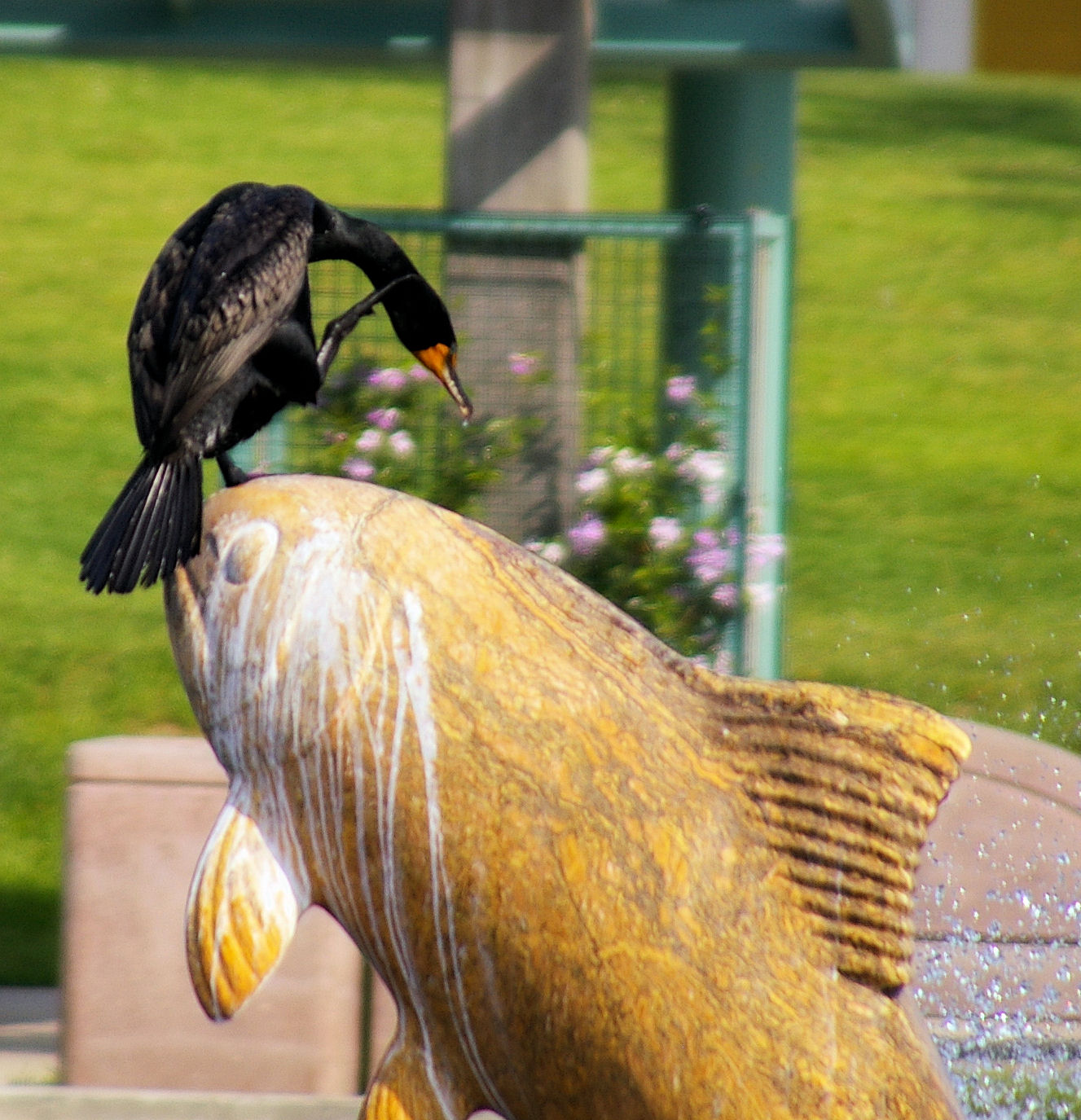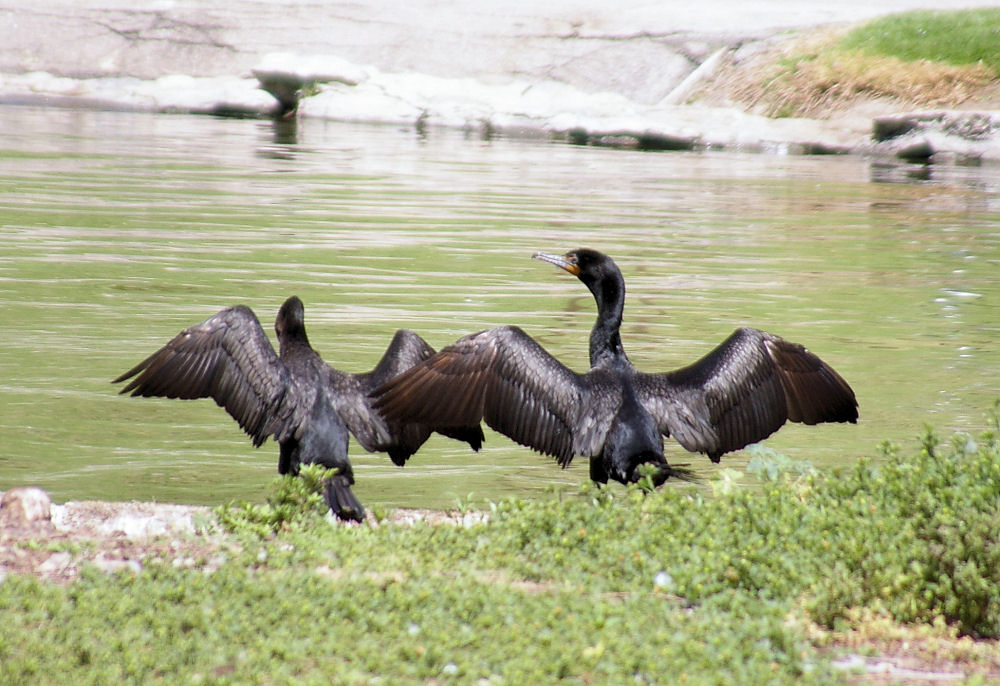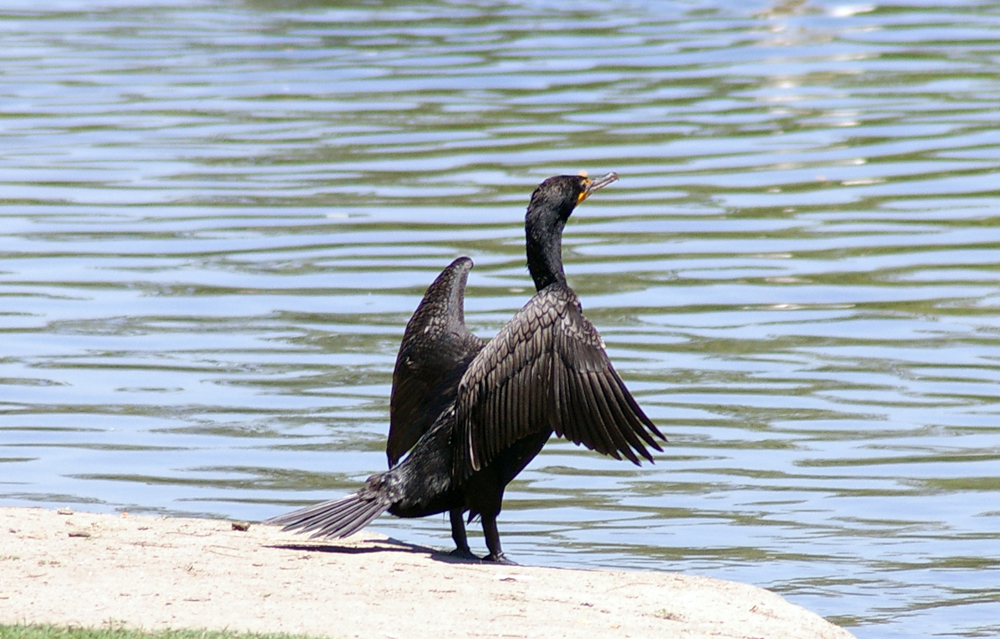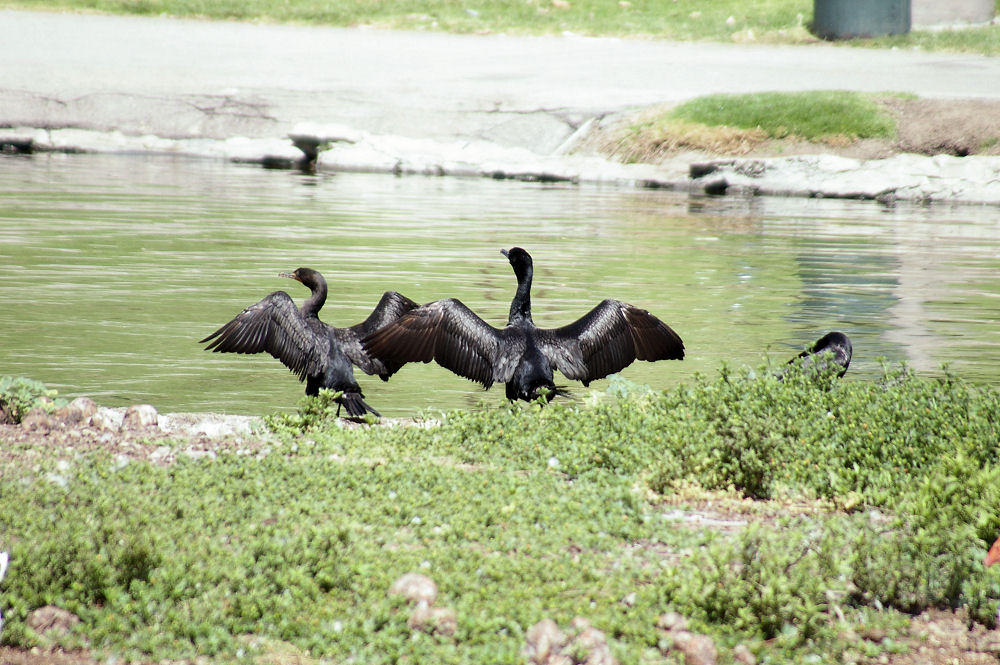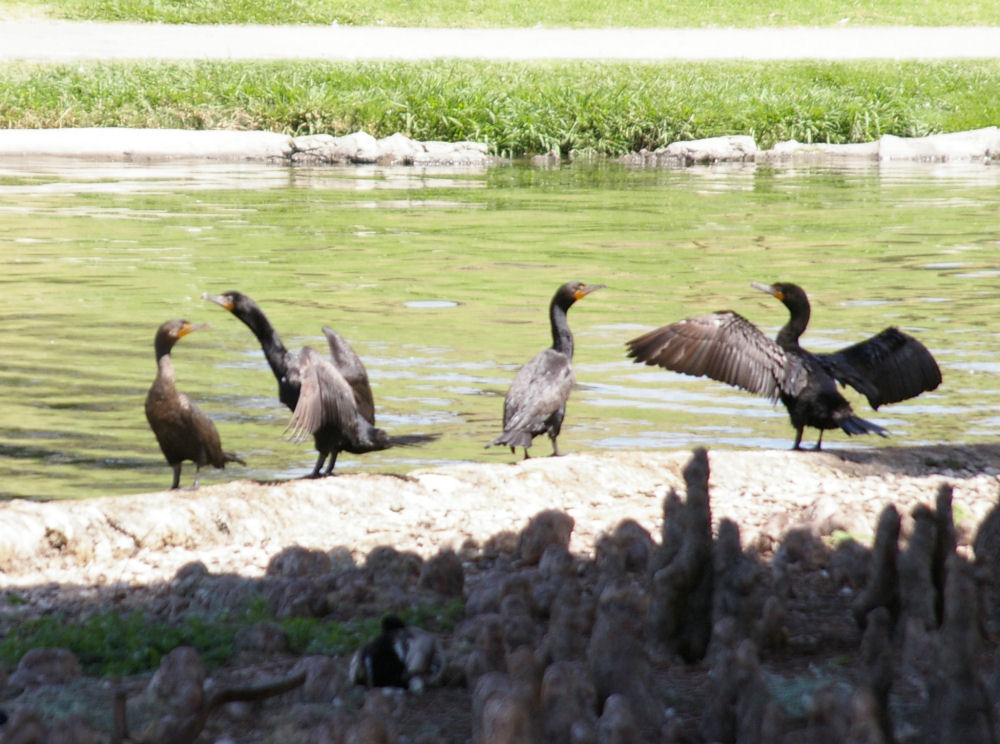|
|
|
 |
Double-crested Cormorant
|
| Phalacrocorax auritus | |
The Double-crested Cormorant is the most numerous and widespread North American cormorant. It's also the only one that occurs in large numbers inland as well as on the coast. Growing in numbers throughout its range, this cormorant is increasingly being blamed for declines in sport fisheries and for devastating fish farms.
Interesting Information
-
The Double-crested Cormorant makes a bulky nest of sticks and other materials. It frequently picks up junk, such as rope, deflated balloons, fishnet, and plastic debris to incorporate into the nest. Parts of dead birds are commonly used too.
-
Large pebbles are occasionally found in cormorant nests, and the cormorants treat them as eggs.
-
Double-crested Cormorant nests often are exposed to direct sun. Adults shade the chicks and also bring them water, pouring it from their mouths into those of the chicks.
-
In breeding colonies where the nests are placed on the ground, young cormorants leave their nests and congregate into groups with other youngsters (creches). They return to their own nests to be fed.
-
Accumulated fecal matter below nests can kill the nest trees. When this happens, the cormorants may move to a new area or they may simply shift to nesting on the ground.
Description
Adult Description
-
Size: 70-90 cm (28-35 in)
-
Wingspan: 114-123 cm (45-48 in)
-
Weight: 1200-2500 g (42.36-88.25 ounces)
-
Large, dark water bird.
-
Long body and long neck.
-
Medium-sized bill is blunt or hooked at tip.
-
Legs short and dark.
-
Tail moderately long.
-
Bare skin around face orange.
-
Often sits with wings extended.
-
Neck kinked during flight.
-
Adult all black with greenish gloss.
-
In breeding has small plumes over eyes; may be white, black, or mottled.
-
Eye brilliant turquoise.
Sex Differences
Sexes similar.
Immature
Upper breast and throat pale. Chest variable from nearly whitish to dusky. Usually chest pale and belly dark, but may be uniform pale below.
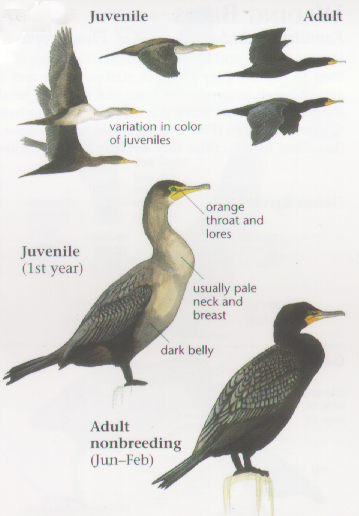
Photo taken from: The Sibley Field Guide by David Allen Sibley
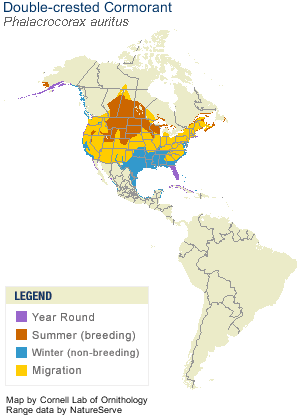
© 2003 Cornell Lab of Ornithology
|
Habitat |
|
Found in diverse aquatic habitats, such as ponds, lakes, rivers, lagoons, estuaries, and open coastline; more widespread in winter. |
|
Behavior |
|
Dives from the surface of the water and chases prey underwater. Grabs fish in bill, without spearing it. |
|
Food |
|
Predominantly fish. Also some other aquatic animals, insects, and amphibians. |
Taxonomy
| Kingdom: | Animalia |
| Phylum: | Chordata |
| Subphylum: | Vertebrata |
| Class: | Aves |
| Order: | Suliformes |
| Family: | Phalacrocoracidae |
| Genus: | Phalacrocorax |
| Species: | Phalacrocorax auritus |
| Subspecies: | Phalacrocorax auritus albociliatus |
| Phalacrocorax auritus auritus | |
| Phalacrocorax auritus cincinatus | |
| Phalacrocorax auritus floridanus | |
| Phalacrocorax auritus heuretus |
Similar Species |
|
Great Cormorant bigger and blockier, has yellow facial skin bordered by white feathers; immature with belly paler than chest. Neotropic Cormorant slimmer; tail longer; facial skin smaller and pointed at rear, bordered white in breeding adult. Brandt's Cormorant has less conspicuous and dark facial skin, bordered with pale feathers. Red-faced and Pelagic cormorants smaller and slimmer, with much smaller bills and red facial skin. |
|
Bird Sound |
|
Deep guttural grunts. |
|
Eggs look like this |
|
Photo taken from: ARCTOS Collaborative Collection Management Solution |
Videos
Double crested Cormorants
Sunning Themselves on Shore
Double crested Cormorants
Jump Flying Across the Pond
Double crested Cormorants
Swimming and Soaring
